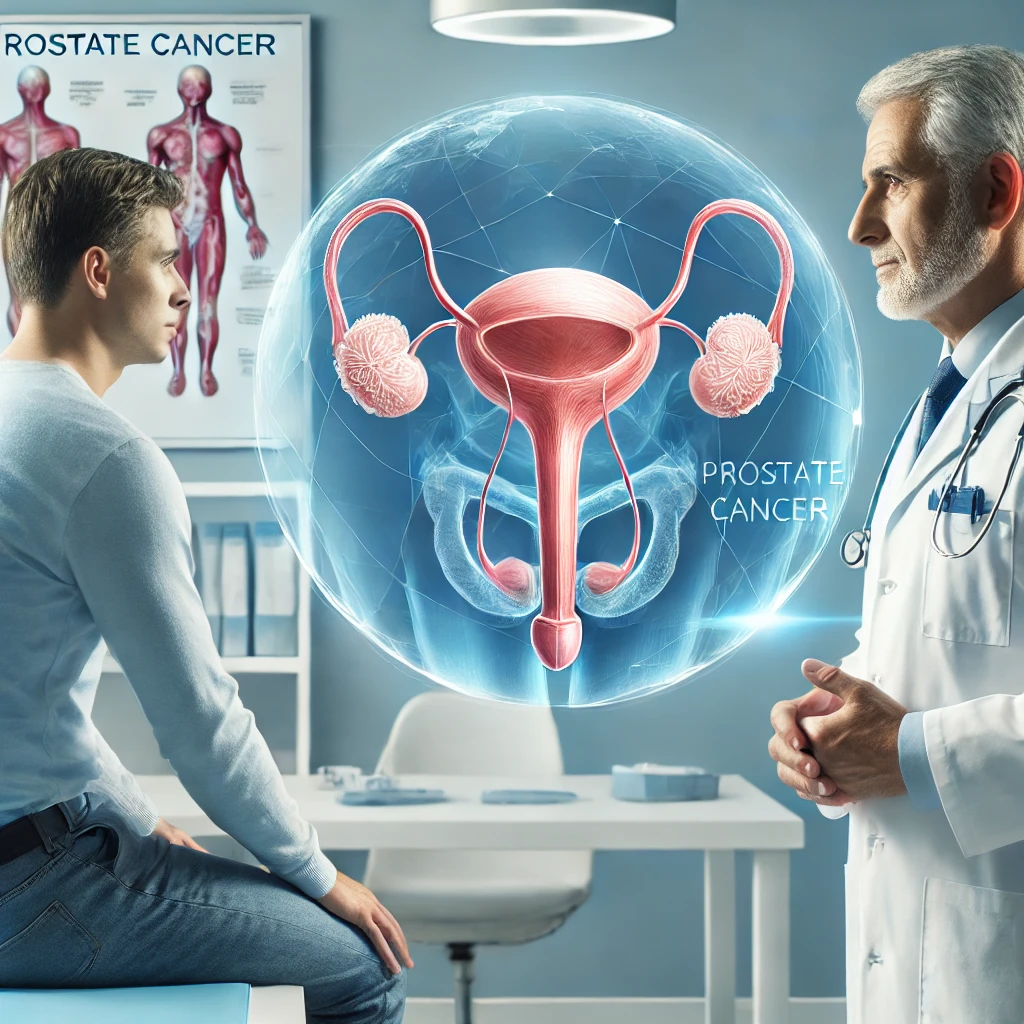Prostate cancer is one of the most common types of cancer affecting men, especially in the USA. Early detection and treatment can make a significant difference, making it essential to understand this condition thoroughly.
This article offers a detailed yet friendly explanation of prostate cancer, its symptoms, causes, treatments, and ways to reduce risk. Stay informed and proactive—your health matters!

What Is Prostate Cancer?
Prostate cancer occurs when cells in the prostate gland—a small, walnut-shaped gland in men—grow uncontrollably. The prostate is responsible for producing seminal fluid, which nourishes and transports sperm.
How Common Is It?
Prostate cancer is highly prevalent, especially among men over 50. In the USA, it is the second leading cause of cancer deaths in men, following lung cancer.
Symptoms of Prostate Cancer
Early-stage prostate cancer may not cause noticeable symptoms. However, as the cancer progresses, you may experience:
- Frequent urination, especially at night.
- Difficulty starting or stopping urination.
- A weak or interrupted urine flow.
- Blood in urine or semen.
- Pain in the lower back, hips, or thighs.
Tip: If you notice any of these symptoms, consult your doctor promptly. Early detection can save lives.
What Causes Prostate Cancer?
The exact cause of prostate cancer isn’t fully understood, but several factors increase the risk:
1. Age
The risk rises significantly after age 50. Most cases are diagnosed in men over 65.
2. Family History
Men with a father or brother diagnosed with prostate cancer are at higher risk.
3. Ethnicity
African American men are more likely to develop prostate cancer and often experience more aggressive forms of the disease.
4. Diet and Lifestyle
A diet high in fat and low in fruits and vegetables may increase risk. Maintaining a healthy lifestyle is crucial.
Diagnosis of Prostate Cancer
Prostate cancer is often detected through routine screenings. Two common tests include:
- PSA Test (Prostate-Specific Antigen): A blood test that measures PSA levels. Elevated levels may indicate cancer.
- Digital Rectal Exam (DRE): A physical exam to feel for abnormalities in the prostate.
Note: Abnormal results may lead to further tests like a biopsy or imaging studies.
Stages of Prostate Cancer
Prostate cancer is categorized into four stages based on its spread:
- Stage I: Cancer is confined to the prostate and grows slowly.
- Stage II: Cancer is larger but still localized.
- Stage III: Cancer has spread to nearby tissues.
- Stage IV: Cancer has metastasized to distant organs.
Treatment Options
Treatment depends on the stage, age, and overall health of the patient. Common treatments include:
1. Active Surveillance
For slow-growing cancers, doctors may recommend regular monitoring without immediate treatment.
2. Surgery
A prostatectomy (removal of the prostate) is often performed for localized cancer.
3. Radiation Therapy
High-energy rays are used to destroy cancer cells.
4. Hormone Therapy
This reduces levels of male hormones that fuel cancer growth.
5. Chemotherapy
Used for advanced cases, chemotherapy kills rapidly growing cancer cells.
6. Immunotherapy
Emerging treatments like immunotherapy stimulate the immune system to fight cancer.
Reducing Your Risk
While some risk factors are beyond your control, adopting a healthy lifestyle can help:
- Eat a balanced diet rich in fruits, vegetables, and whole grains.
- Exercise regularly to maintain a healthy weight.
- Avoid smoking and limit alcohol consumption.
“An ounce of prevention is worth a pound of cure.” Regular check-ups can make all the difference.
Living With Prostate Cancer
A diagnosis of prostate cancer is life-changing, but support is available. Many men live long, fulfilling lives after treatment. Join support groups, lean on family and friends, and consult professionals to manage your health effectively.
For more tips and in-depth explanations, visit medicaltimes.io—your trusted source for health-related topics.
Top 10 Frequently Asked Questions (FAQs)
- What is the primary risk factor for prostate cancer?
Age is the biggest risk factor, especially after 50. - Can prostate cancer be cured?
Yes, early-stage prostate cancer is highly treatable. - Is prostate cancer hereditary?
Family history increases the risk significantly. - What foods can reduce prostate cancer risk?
Foods rich in antioxidants, like tomatoes and leafy greens, are beneficial. - How often should men get screened?
Starting at age 50, or earlier for high-risk individuals, discuss screenings with your doctor. - Is prostate cancer painful?
Early stages are usually painless, but advanced stages can cause discomfort. - Can lifestyle changes prevent prostate cancer?
A healthy lifestyle reduces risk but doesn’t guarantee prevention. - What are the survival rates for prostate cancer?
The 5-year survival rate for localized cancer is nearly 100%. - Are there side effects of treatment?
Side effects vary but may include incontinence or erectile dysfunction. - Can prostate cancer return after treatment?
Yes, regular follow-ups are essential to monitor recurrence.
